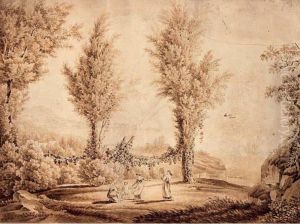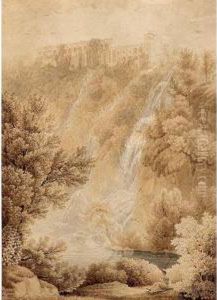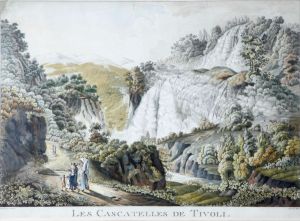Wilhelm Friedrich Gmelin Paintings
Wilhelm Friedrich Gmelin was a German painter and engraver born on July 8, 1760, in Tübingen, Duchy of Württemberg. He belonged to a family that was well-known for its contributions to the fields of science and art. His father, Johann Friedrich Gmelin, was a naturalist and professor at the University of Tübingen.
Wilhelm showed an early aptitude for art and was initially taught by his uncle, Philipp Friedrich Gmelin, who was also a painter. He went on to study at the Academy of Fine Arts in Stuttgart, where he honed his skills in painting and engraving.
In the early stages of his career, Gmelin worked in Stuttgart and later in Italy, where he was influenced by the Italian masters. His time in Italy, particularly in Rome, had a significant impact on his artistic development. Gmelin's works included historical paintings, landscapes, and portraits. He was known for his attention to detail, his use of light, and his ability to convey the textures of different materials.
Returning to Germany, Gmelin became a court painter in Stuttgart. He also held a position as a professor at the Academy of Fine Arts, where he had once been a student. Throughout his career, Gmelin contributed to the development of art education in Germany and was respected for his teaching as well as his artistic talents.
Wilhelm Friedrich Gmelin's legacy is that of a skilled painter and engraver who played a role in the cultural life of Germany during a time of significant change and development in the arts. He passed away on November 1, 1820, in Stuttgart. His works remain a testament to the artistic achievements of the late 18th and early 19th centuries in Germany.











